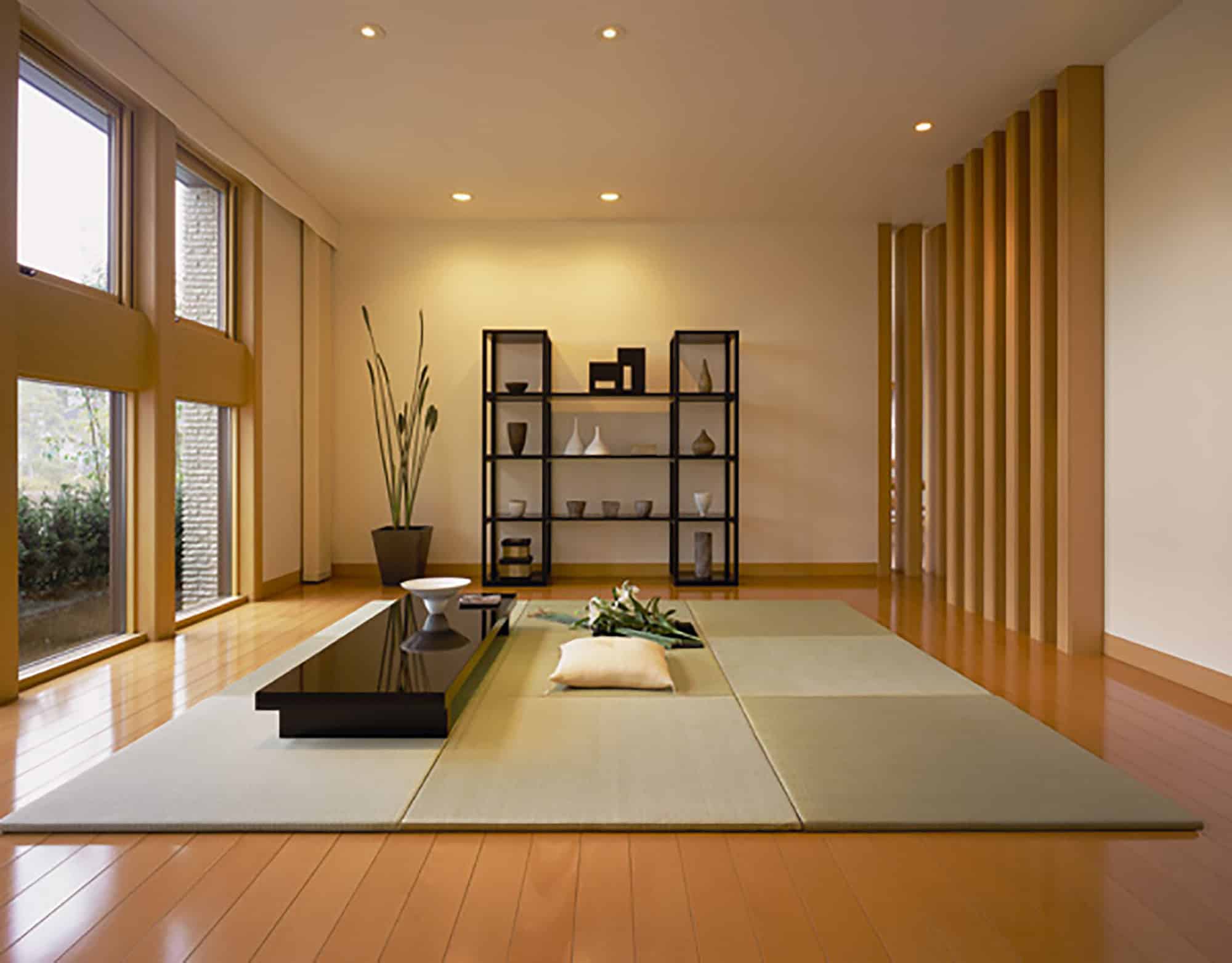Design Elements and Principles

Modern Japanese interior design is characterized by a blend of traditional Japanese aesthetics and contemporary design principles. Key design principles include minimalism, asymmetry, and the use of natural materials.
Minimalism
Minimalism is a defining feature of modern Japanese interiors. It emphasizes simplicity, functionality, and the absence of clutter. Furniture is typically low-slung and unadorned, with clean lines and neutral colors. Spaces are often left open and uncluttered, allowing for a sense of spaciousness and tranquility.
Asymmetry
Asymmetry is another important design principle in modern Japanese interiors. It creates a sense of balance and harmony without being perfectly symmetrical. This can be achieved through the use of off-center arrangements, contrasting colors, or unevenly placed objects.
Modern Japanese interiors evoke a sense of tranquility and simplicity, characterized by clean lines, natural materials, and muted colors. These interiors often incorporate elements from traditional Japanese aesthetics, such as shoji screens and tatami mats. To enhance the minimalist aesthetic, many modern Japanese homes opt for simple wallpaper designs or even leave the walls bare.
However, for those who wish to add a touch of personality to their space, there are a wide range of wallpaper iphone 13 pro max options available that complement the modern Japanese interior style.
Use of Natural Materials
Natural materials, such as wood, stone, and bamboo, are commonly used in modern Japanese interiors. These materials bring a sense of warmth and organic beauty to the space. Wood is often used for flooring, furniture, and wall treatments, while stone is used for countertops, sinks, and flooring. Bamboo is often used for screens, blinds, and other decorative elements.
Influence of Traditional Japanese Aesthetics
Modern Japanese interior design is heavily influenced by traditional Japanese aesthetics, such as the concept of wabi-sabi. Wabi-sabi is a Japanese aesthetic that embraces the beauty of imperfection, impermanence, and simplicity. It is reflected in the use of natural materials, the acceptance of asymmetry, and the appreciation of the patina of age.
The stark minimalism of modern Japanese interiors, with its clean lines and neutral palette, stands in stark contrast to the opulent drama of gothic interiors. Yet, both styles share a preoccupation with creating an immersive and atmospheric space. In modern Japanese interiors, this is achieved through the use of natural materials, such as wood and stone, and the incorporation of traditional elements, such as shoji screens and tatami mats.
In gothic interiors, the focus is on creating a sense of mystery and intrigue, through the use of dark colors, heavy fabrics, and elaborate ornamentation.
Furniture and Decor

Modern Japanese interiors prioritize functionality, simplicity, and natural materials. Furniture and decor play a crucial role in creating a harmonious and inviting space.
Low tables, tatami mats, and futons are common furniture pieces in modern Japanese interiors. Low tables, often made of wood or bamboo, provide a versatile surface for dining, working, or displaying decorative items. Tatami mats, woven from natural fibers, add warmth and texture to the floor, creating a comfortable and inviting space for seating or sleeping. Futons, traditional Japanese bedding, can be rolled up and stored away during the day, maximizing space and creating a clutter-free environment.
Natural Materials
Natural materials, such as wood, bamboo, and stone, are highly valued in modern Japanese interiors. Wood, with its warm tones and organic textures, brings a sense of warmth and tranquility to the space. Bamboo, known for its strength and durability, adds a touch of elegance and sophistication. Stone, with its timeless beauty and versatility, can be used for flooring, countertops, or decorative accents, adding a touch of natural charm to the interior.
Japanese-Inspired Decor
Incorporating Japanese-inspired decor elements can add a touch of authenticity and cultural flair to a modern interior. Shoji screens, with their delicate paper panels and wooden frames, provide privacy and create a sense of division without blocking out natural light. Ikebana arrangements, the traditional Japanese art of flower arrangement, bring a touch of nature and tranquility to the space. Japanese ceramics, with their intricate designs and subtle colors, add a touch of elegance and sophistication to any room.
Color and Lighting: Modern Japanese Interior

In modern Japanese interiors, color palettes often draw inspiration from nature, incorporating neutral tones, earthy hues, and pops of color to create a serene and harmonious atmosphere. Neutral tones such as white, beige, and gray provide a clean and understated backdrop, allowing other elements of the space to take center stage. Earthy hues like brown, green, and blue evoke a sense of tranquility and connection to the outdoors. Pops of color, such as vibrant reds, oranges, or blues, add a touch of energy and vibrancy to the space, creating focal points and highlighting specific areas.
Natural light plays a crucial role in modern Japanese interiors, contributing to the sense of spaciousness and tranquility. Large windows and sliding glass doors allow ample natural light to flood the space, creating a bright and airy atmosphere. This natural light also helps to blur the boundaries between indoors and outdoors, bringing the beauty of nature into the home.
Lighting Fixtures, Modern japanese interior
Lighting fixtures in modern Japanese interiors are both functional and aesthetically pleasing. Paper lanterns, with their soft, diffused light, create a warm and inviting ambiance. Floor lamps, with their adjustable height and direction, provide targeted lighting for specific areas. Recessed lighting, with its sleek and unobtrusive design, blends seamlessly into the ceiling, providing ambient illumination without overpowering the space.